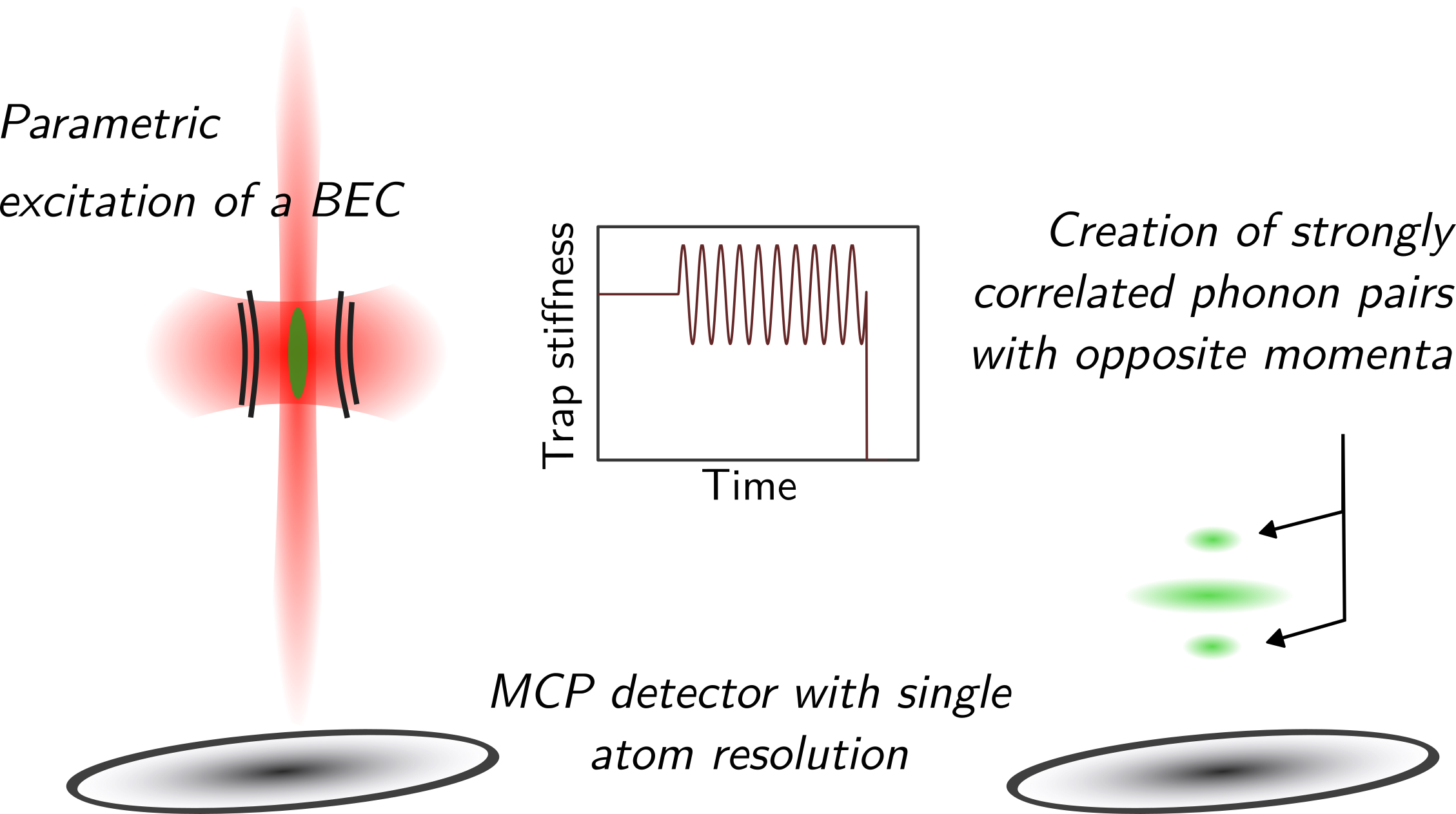PhD
Description of my PhD project
My PhD project focuses on the COSQUA projects, that stands for Cosmology and Quantum Simulations. I work in the Quantum Atom Optics under the supervision of Chris Westbrook and Denis Boiron. This project is in tight collaboration with two theoreticians : Scott Robertson, now researcher at Poitier, and Amaury Micheli, now post-doctoral fellow in Japan.
Introduction
In standard cosmological models, inflation is driven by a quantum field, the inflaton, whose constant energy density drives the superluminal expansion of the universe

Although in situ observation of inflaton particle creation process is impossible, this pair production through parametric amplification is analogous to the creation of phonon pairs in a Bose-Einstein (BEC) condensate whose interaction strength is temporally modulated. Modulating the stiffness of a dipole trap of a cigar shaped BEC is equivalent to modulating the effective one-dimensional interaction strength in a BEC, and thus we are able to probe the correlation of entangled metastable helium atoms by the use of a micro-channel plate detector (MCP). Our experimental procedure is the following
Experimental plateform
Results
We recently succeeded in observing a violation of the Cauchy-Schwarz inequality and squeezing (manuscript in preparation). Is this sufficient to assume non-separability of the state ? No : we need to make sure that their are no coherence between the modes and therefore to build an atomic interferometer
 On the image here, a small slice of a Bose-Einstein condensate was extracted using a two photons transfer. Depending on the duration and shape of the pulse, it is possible to transfer an atom with probability 1 or 1/2, giving opportunity to do mirrors and beam-splitters. With this beams we should be able to probe the coherence between the two modes and therefore to demonstrate entanglement !
On the image here, a small slice of a Bose-Einstein condensate was extracted using a two photons transfer. Depending on the duration and shape of the pulse, it is possible to transfer an atom with probability 1 or 1/2, giving opportunity to do mirrors and beam-splitters. With this beams we should be able to probe the coherence between the two modes and therefore to demonstrate entanglement !